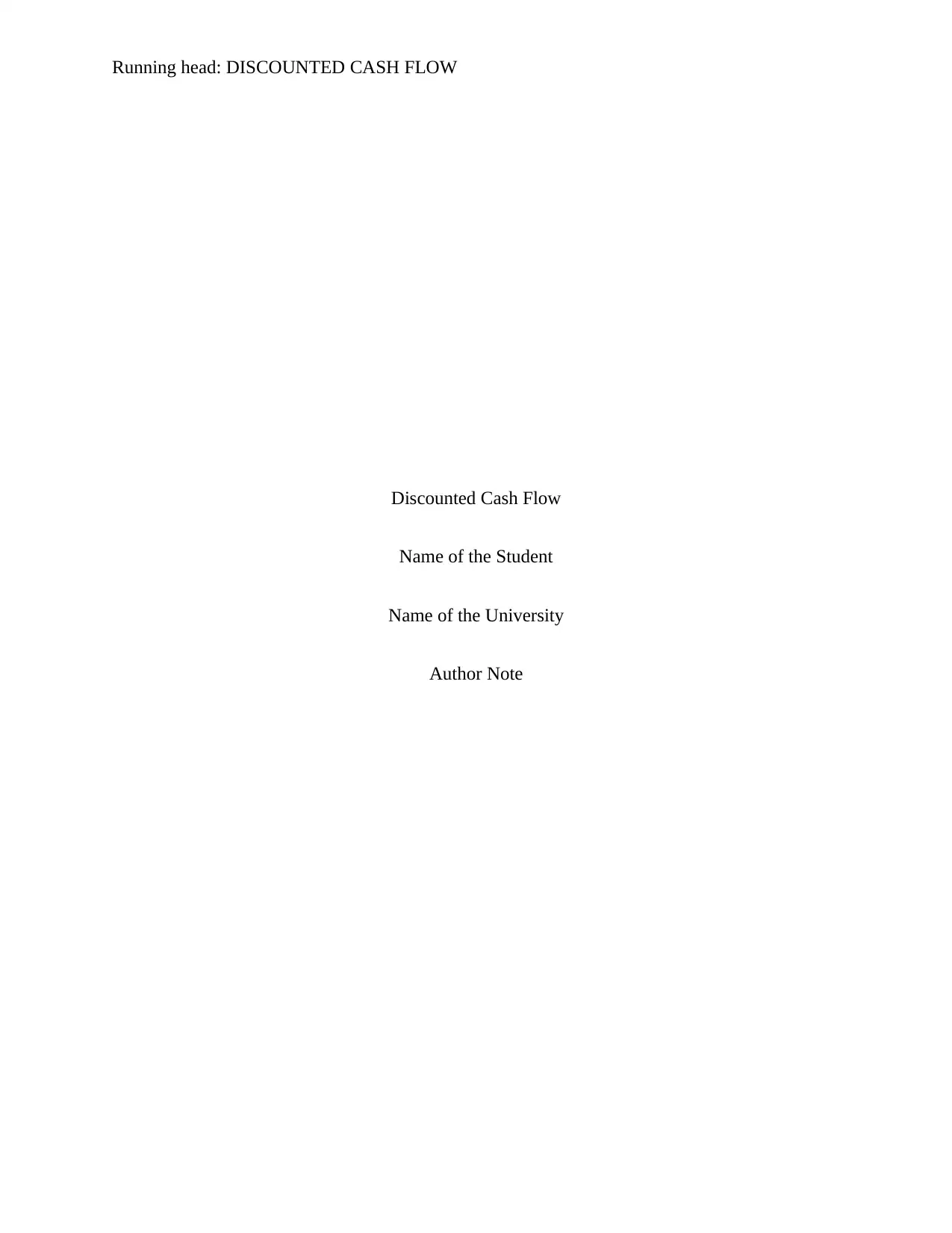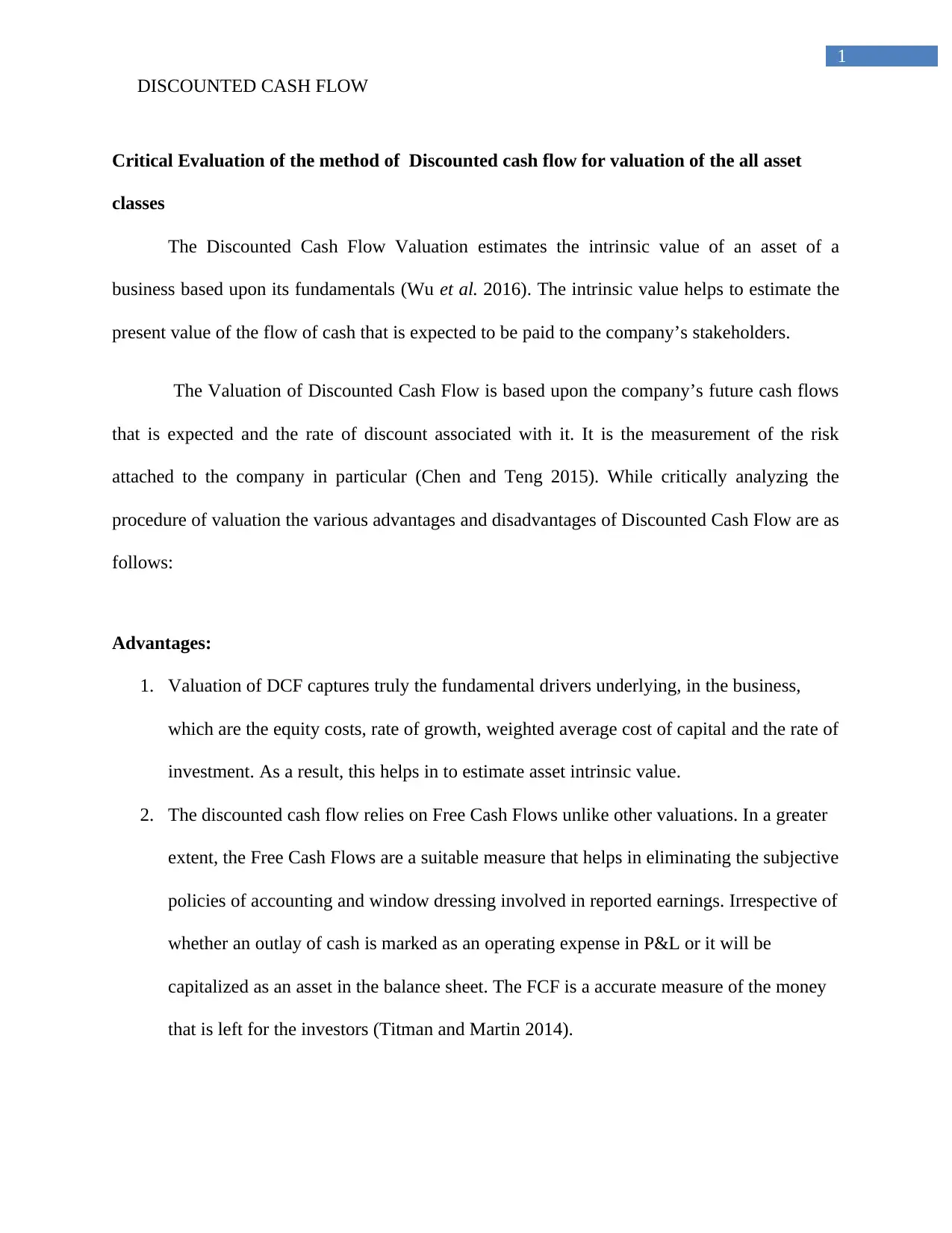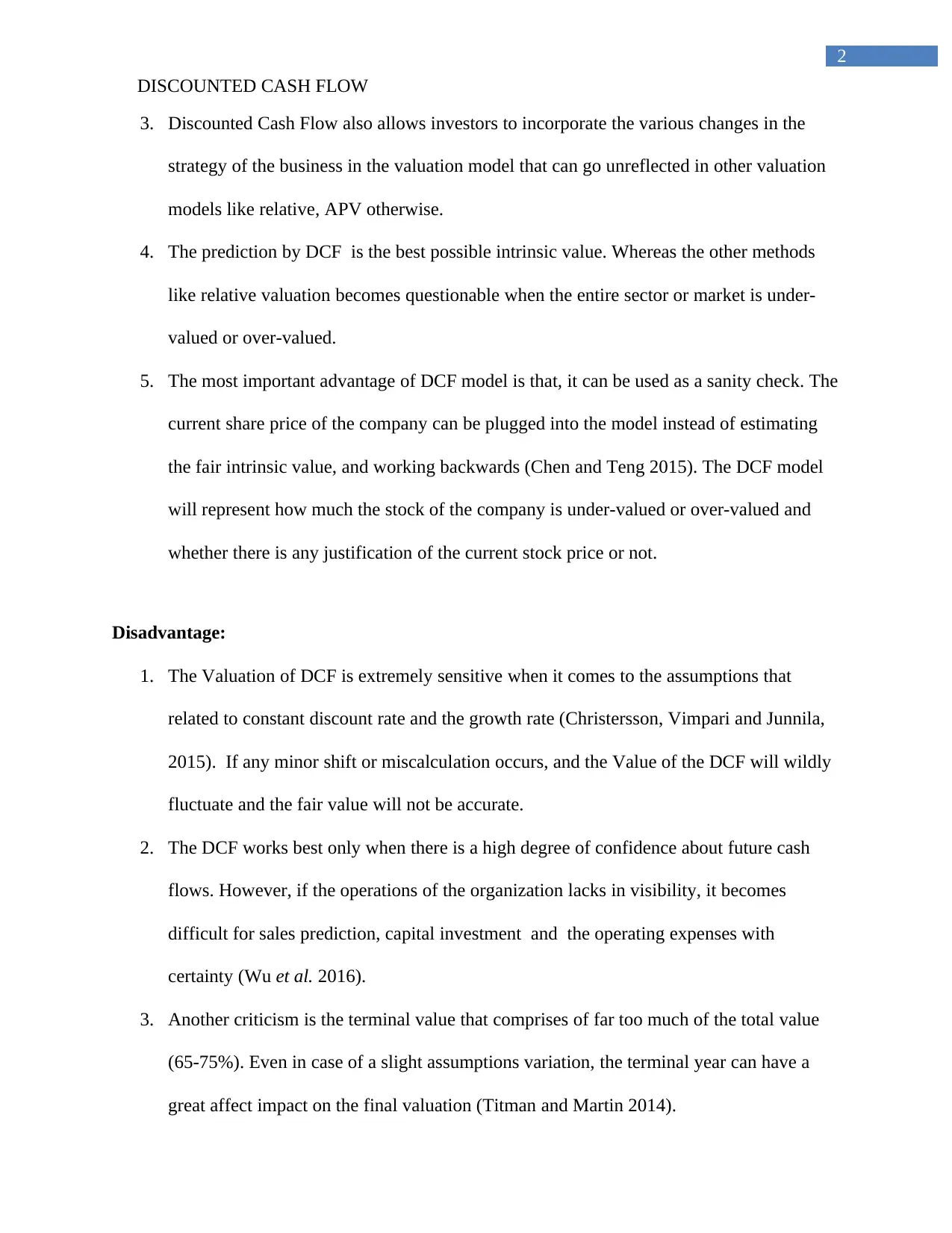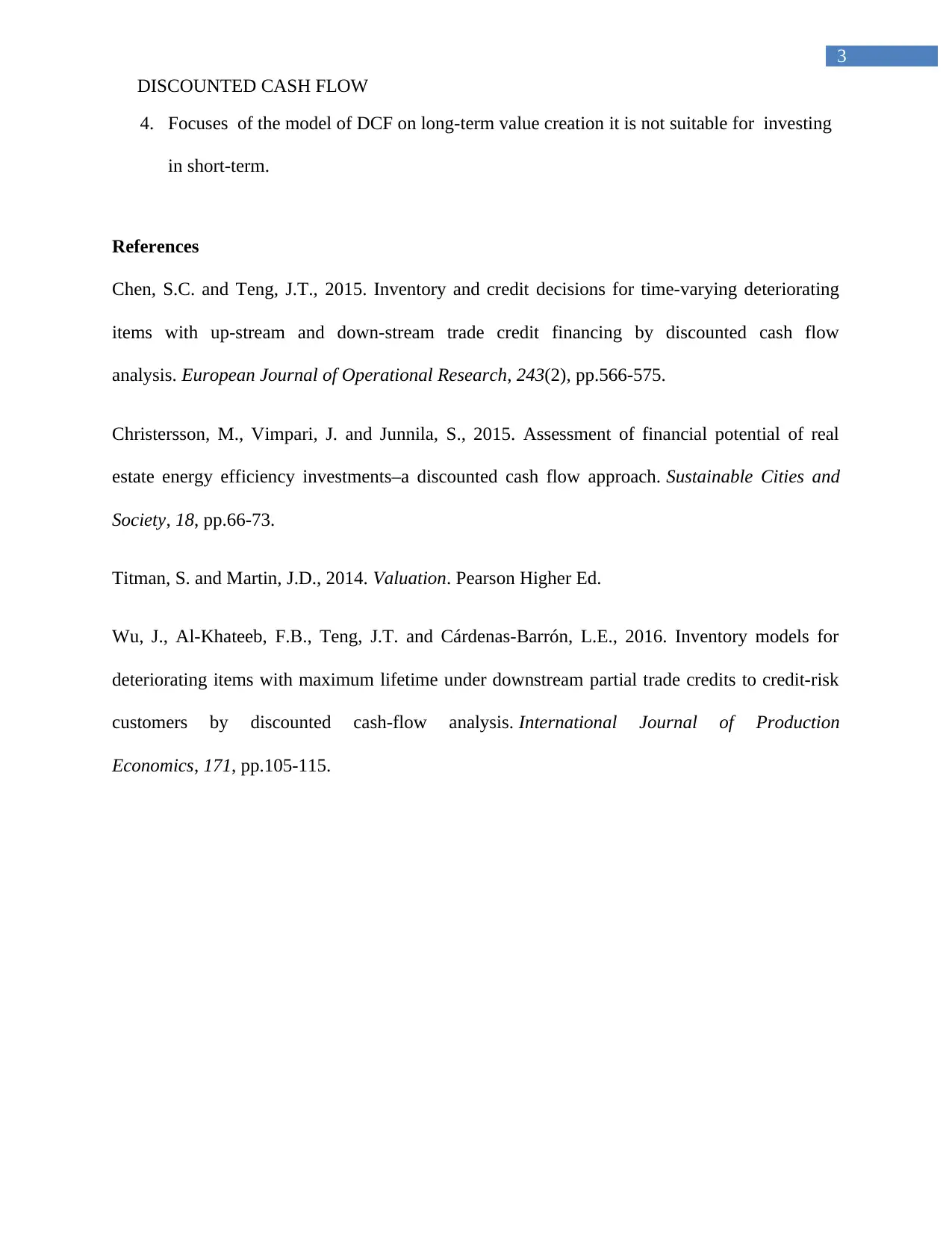A Critical Evaluation of the Discounted Cash Flow Valuation Method
VerifiedAdded on 2023/06/14
|4
|810
|390
Essay
AI Summary
This essay provides a critical evaluation of the Discounted Cash Flow (DCF) valuation method, which estimates the intrinsic value of an asset or business based on its fundamentals and expected future cash flows. The analysis highlights the advantages of DCF, including its reliance on fundamental drivers like equity costs, growth rate, and weighted average cost of capital, as well as its use of free cash flows to eliminate subjective accounting policies. It also notes the model's ability to incorporate changes in business strategy. However, the essay also discusses the disadvantages of DCF, such as its sensitivity to assumptions about discount and growth rates, its limited applicability when future cash flows are uncertain, and the significant impact of terminal value assumptions on the final valuation. The essay concludes by noting that the DCF model, with its focus on long-term value creation, is not suitable for short-term investing.
1 out of 4











![[object Object]](/_next/static/media/star-bottom.7253800d.svg)